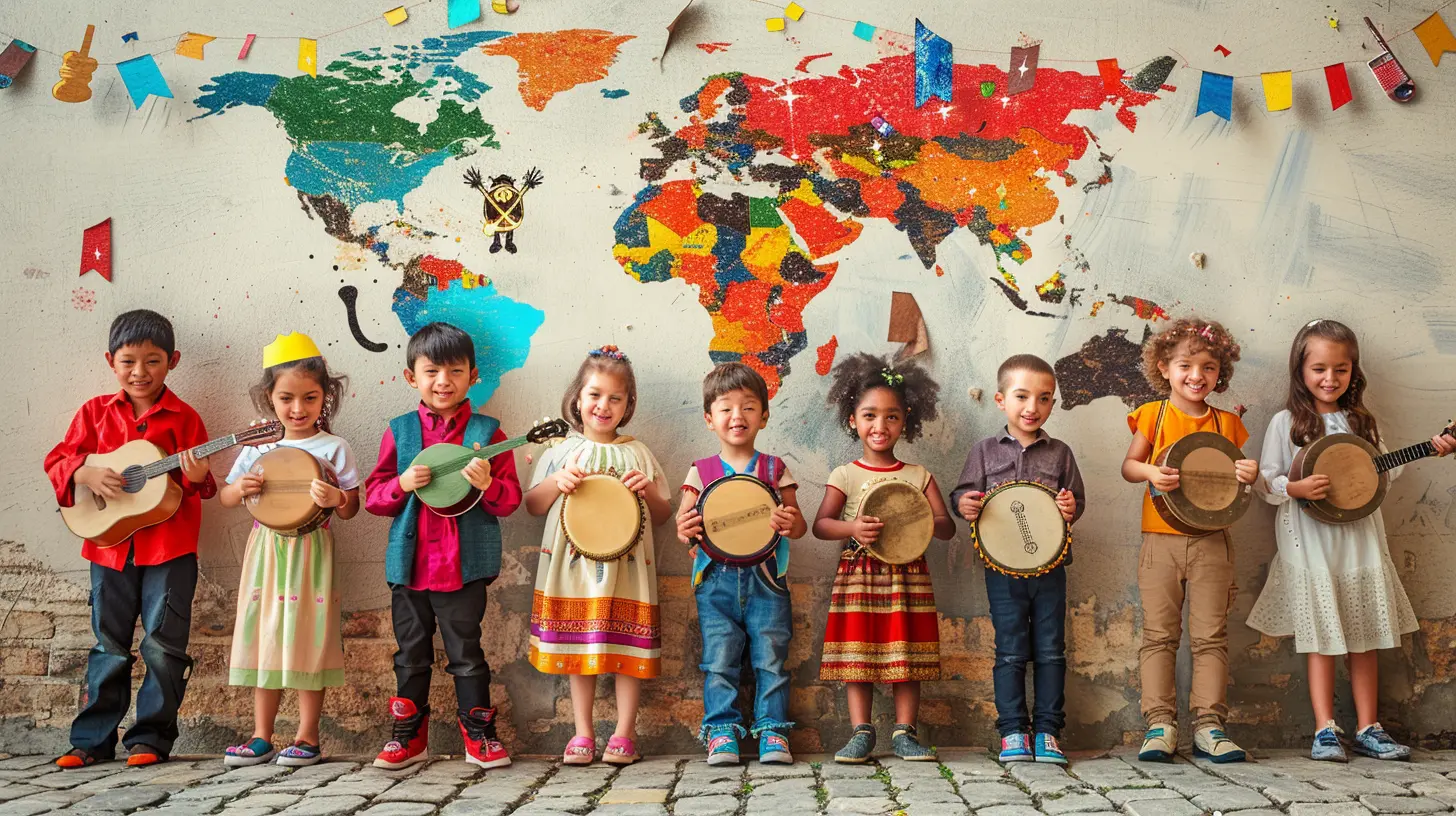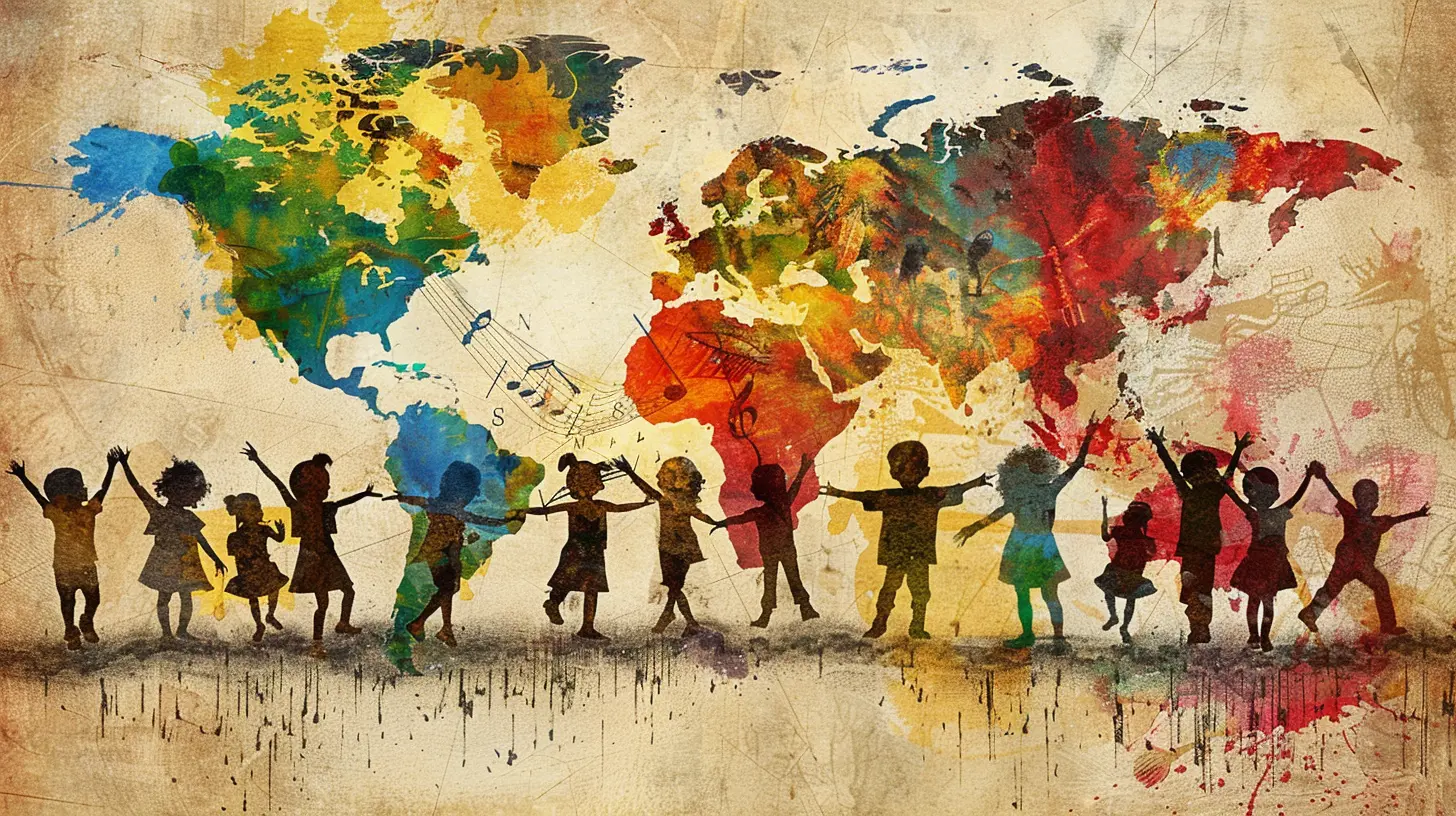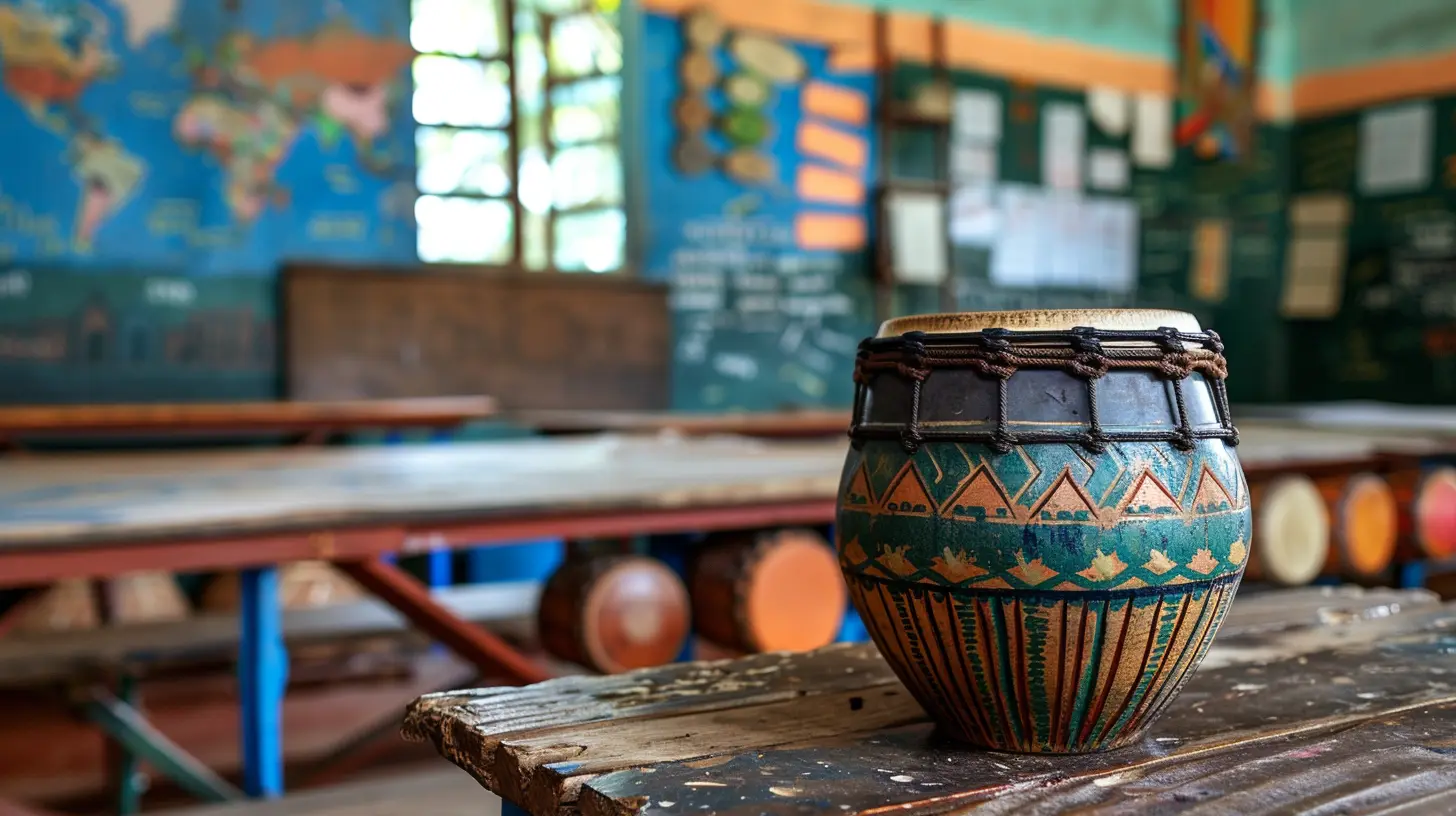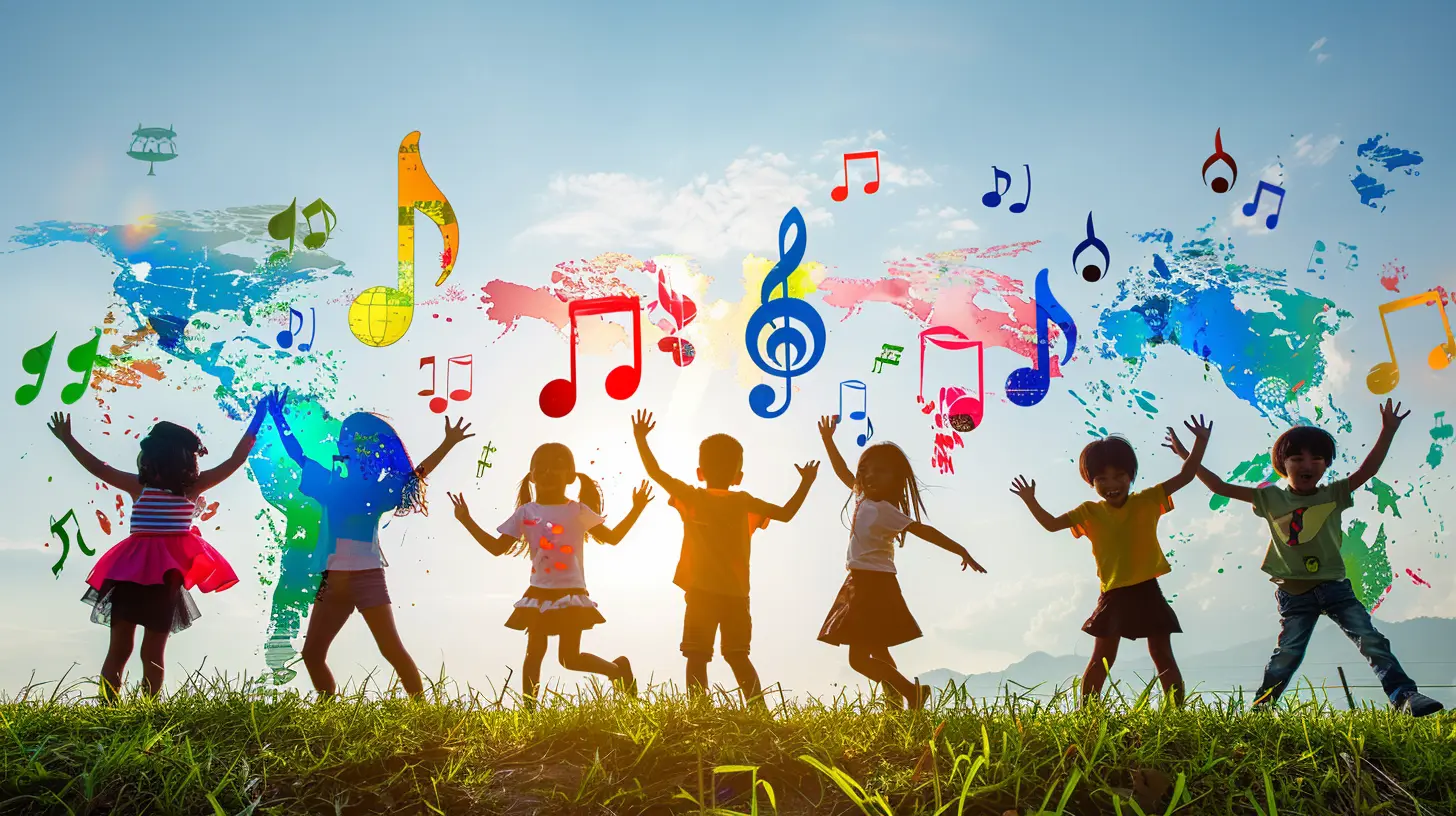17 September 2025
Ever had that moment when your classroom just needed a spark? Something fresh, something exciting—something that doesn’t come from your usual dusty lesson plans? Well, here’s a little secret sauce: world music. No, not just background flute music or tribal drums for effect. We’re talking about really diving into global rhythms, melodies, and stories that can transform how your students think, feel, and even learn.
“Incorporating world music in the classroom” isn't some trendy educational gimmick. It's a game-changer. Whether you're teaching kindergarteners, middle schoolers, or even college students, global music breathes new life into the learning experience.
So, let's roll up our sleeves and hit the right notes—here’s how world music can jazz up your classroom, and how you can seamlessly weave it into your curriculum like the maestro you are.
Why World Music? What’s the Big Deal?
Alright, first things first—why should we even bother with world music? Well, it’s more than just music. It’s culture wrapped in rhythm. It’s history played out on bongos, identity danced through flamenco, and stories sung through ancient chants.Think of it this way—music is the one universal language in the world. When integrated properly, it fosters empathy, encourages inclusivity, and helps students grasp the diversity of human experience in a way that textbooks rarely can.
But that’s just the tip of the iceberg. Here’s what world music brings to your classroom:
- Cultural Understanding: Students get a front-row seat to traditions, languages, and values from across the globe.
- Social-Emotional Learning (SEL): Helps students connect with emotions, develop empathy, and communicate better.
- Enhanced Engagement: Let’s face it—students are more tuned in when there’s music involved.
- Cross-Disciplinary Learning: Use music to teach geography, history, languages, and even math.
And the best part? It doesn't cost a fortune or take a PhD in ethnomusicology to get started.
Getting Started: What You’ll Need
Before you throw a didgeridoo into your lesson plan, let’s talk logistics. Here’s what you need to get started:1. A Good Music Streaming Service: Spotify, Apple Music, YouTube—take your pick.
2. A Speaker or Headphones for Class Playback: Quality sound matters.
3. Basic Research: Know a bit about the music's cultural background.
4. Curiosity and Openness: From both you and your students.
That’s it. You don’t need fancy instruments or expensive materials. And hey, if you’ve got a ukulele or djembe lying around, that’s a bonus.
Creating Global Playlists for the Classroom
You wouldn’t teach literature with only one author, right? So why teach music with only Western composers?One of the easiest ways to include world music in your curriculum is by creating global playlists. Mix and match from different continents, eras, and styles. Here's a starter playlist structure you can tailor:
Africa
- West African djembe rhythms (great for rhythm lessons)- Nigerian Afrobeat (Fela Kuti is a legend)
- South African a cappella (Ladysmith Black Mambazo, anyone?)
Asia
- Indian classical ragas (calming, meditative)- Japanese taiko drumming (energetic and powerful)
- Chinese folk music with erhu (emotionally stirring)
The Americas
- Latin salsa and cumbia (excellent for movement activities)- Native American flute music (great for mindfulness segments)
- Brazilian samba and bossa nova (hello, rhythm and sway)
Europe
- Balkan brass band music (fun, loud, and lively)- Flamenco from Spain (clapping, dancing, and passion)
- Irish folk (lilting melodies and storytelling)
Each track can be a mini-lesson. Where’s it from? Who plays it? What’s the story behind it?
Interactive Activities That Hit the Right Notes
Now that we’ve got tunes queued up, let's talk about what you can actually DO with this music in the classroom.1. Musical Journaling
Play a world music track and ask students to write down what they hear, feel, and imagine. This simple activity is killer for developing listening skills and emotional intelligence.2. Rhythmic Clapping Games
Take a rhythm from a culture—say, a Cuban clave pattern—and teach it through claps, foot taps, or body percussion. It’s both a mental and physical workout.3. Dance and Movement
No, you don’t need to be a professional dancer. Just lead simple movements inspired by cultural dances. It helps kinesthetic learners and makes cultural study way more engaging.4. Create Your Own Instruments
Use recycled materials to build simple instruments inspired by different cultures—like shakers, drums, or stringed contraptions. It's creative, fun, and eco-friendly!5. Music and Map Game
Play a song and ask students to guess (or research) where it’s from. Then locate it on a world map. Bonus points for connecting the song to that region’s culture, language, or history.Cross-Curricular Connections: Music Meets Everything
World music isn’t just for music class. Let’s break the boundaries.History
Teaching about ancient civilizations or colonialism? Include indigenous music from that era and region. It adds context to the culture and gives voice to communities that history books often gloss over.Geography
Tie songs to their geographic origins. Highlight how terrain, climate, and migration shaped musical styles. Why does Polynesian music use ukuleles? Why did reggae emerge in the Caribbean?Language Arts
Use lyrics in other languages for language acquisition. Even better—translate them together as a class. Also, analyze the stories behind the songs. What are they communicating?Mathematics
Yep, you read that right. Music is full of patterns, ratios, and fractions. Use rhythmic patterns or time signatures to teach basic math concepts. It’s way more fun than a worksheet.Celebrating Cultural Holidays Through Music
Want to go full circle? Incorporate world music during international holidays or cultural appreciation weeks. Here are a few examples:- Chinese New Year – Include traditional Chinese orchestral music.
- Día de los Muertos – Play mariachi or folk songs from Mexico.
- Carnival (Brazil) – Explore samba, masks, and parades.
- Diwali (India) – Use bhajans or Bollywood songs.
This doesn’t just teach music—it invites students to celebrate the world.
Dealing With Cultural Appropriation vs. Appreciation
Okay, let’s pause for a second. We’ve been jamming, but we also need to talk about something serious—respect. There’s a fine line between appreciating a culture and appropriating it.When incorporating world music, always:
- Give credit and context: Never present another culture’s music as your own.
- Teach about the origins: Highlight the creators, their stories, and the history.
- Avoid stereotypes: Don’t reduce a culture to one instrument or genre.
- Invite guest musicians: If possible, bring in people from the culture you're studying. It adds authenticity.
The goal is to honor, not imitate. And trust me—your students will pick up on that mindset.
Real-Life Teacher Hacks for Incorporating World Music
Need more practical ways to bring world music into your classroom without reworking your entire curriculum? Here are some quick wins:- Bell Work: Play a different cultural song as students enter the room.
- Transition Music: Use short world music clips to signal activity or subject changes.
- Background While Working: Calm traditional music can boost focus.
- Student-Led Research: Let students pick a country, research its music, and present it.
- Collaborate Across Subjects: Team up with the art or history teacher for a cross-cultural multimedia project.
The Impact on Students? Trust Me—It's Magic
Still on the fence? Here’s what happens when world music becomes part of your teaching toolkit:- Your students become global thinkers.
- They become active listeners.
- They become more curious, creative, and confident.
- They connect dots between cultures, ideas, and themselves.
It’s like watching them discover new parts of the world—and themselves—without ever leaving the classroom.
Final Notes: Every Classroom Deserves a Soundtrack
You don’t need to be a music teacher to bring world music alive. All you need is a love for learning, a bit of rhythm, and the desire to connect students to something bigger than themselves.So go ahead—press play on that Afrobeat track, try a flamenco clapping game, or invite your students to explore a Chinese guzheng solo.
Because every classroom deserves a soundtrack—and the world has trillions to choose from.







Erica Whitley
Incorporating world music in the classroom enhances cultural awareness, promotes inclusivity, and enriches students' learning experiences through diverse auditory exploration.
December 1, 2025 at 8:56 PM